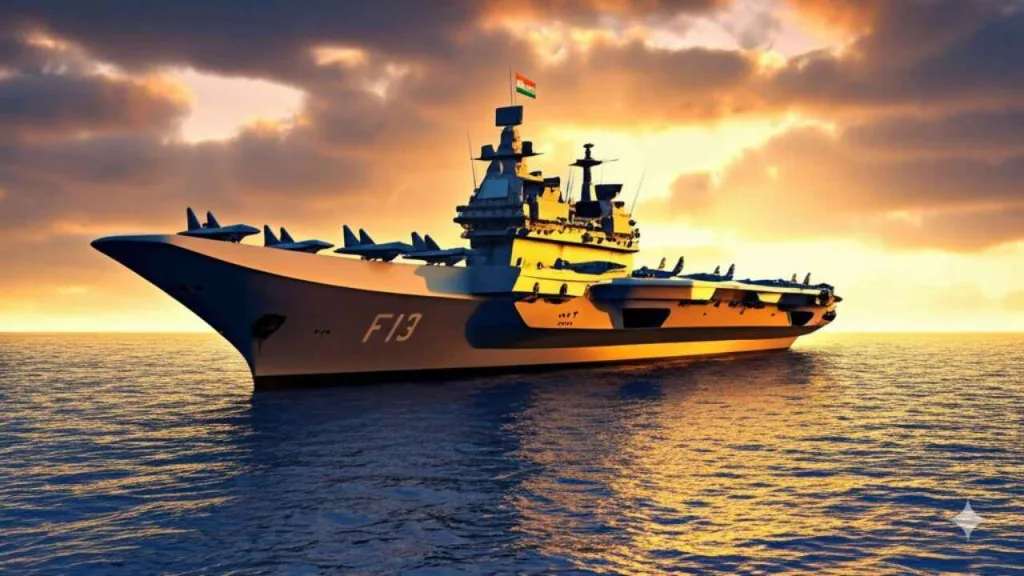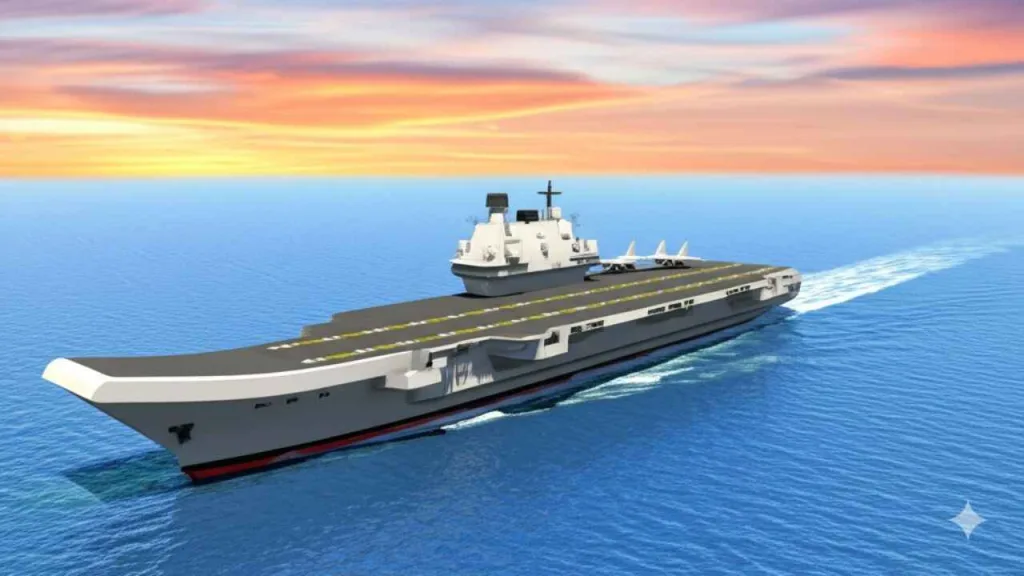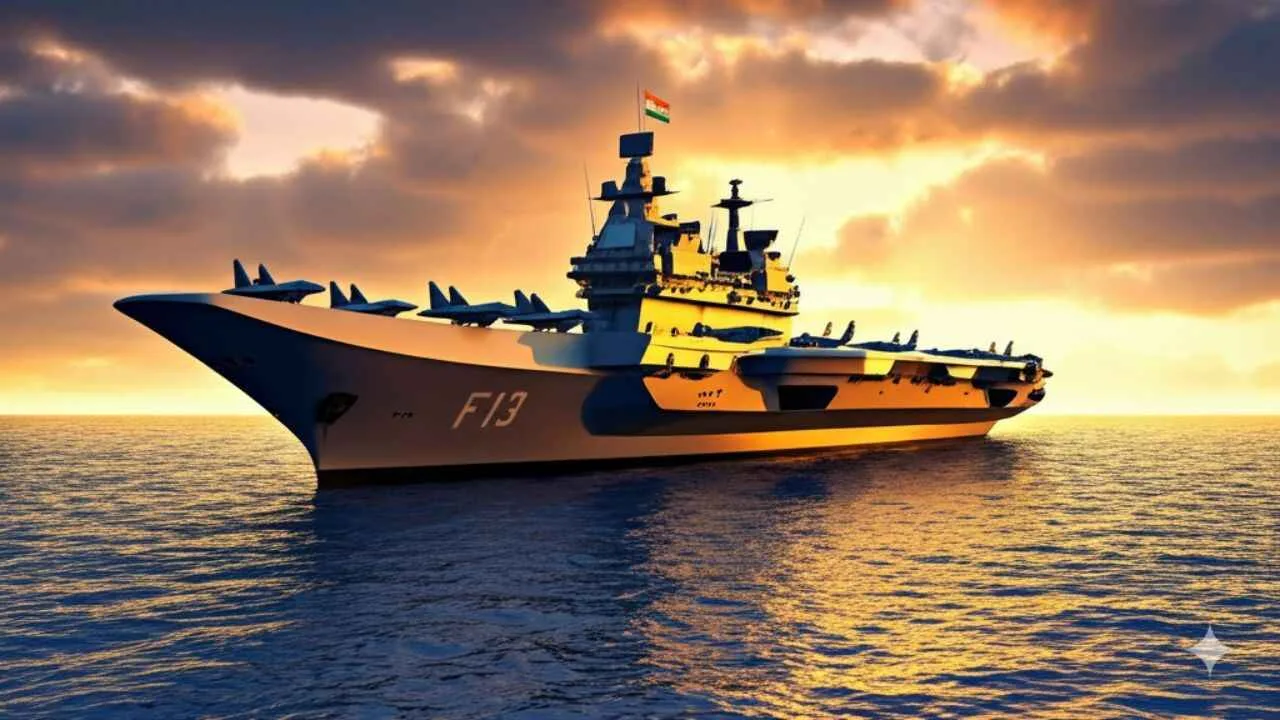INS Vikrant in Arabian Sea: India’s Maritime Muscle Raises Stakes with Pakistan
New Delhi — Tensions are mounting in the Arabian Sea as India’s most powerful warship, the indigenously built aircraft carrier INS Vikrant, maneuvers closer to Pakistan’s maritime borders. The move, widely seen as a strategic signal, comes amid a sharp deterioration in Indo-Pakistani relations following the recent Pahalgam terror attack.
Commissioned in 2022, INS Vikrant is a symbol of India’s rising maritime prowess. As Asia’s largest aircraft carrier, it embodies cutting-edge naval engineering and formidable combat power—housing squadrons of fighter jets, guided missile systems, surveillance drones, and an integrated fleet of escort ships and submarines. In essence, Vikrant operates as a floating fortress, capable of projecting power across vast stretches of ocean.
Its deployment in the Arabian Sea is being closely tracked by regional defense analysts, who say this is more than a routine naval drill. The timing, placement, and scale of the carrier strike group’s movement strongly suggest a strategic maneuver aimed at asserting India’s deterrent capability—and perhaps preparing for more assertive action, should diplomatic efforts stall.

Historical Echoes and Present Tensions
The presence of the Indian Navy so close to Pakistan’s coastline has revived memories of past conflicts. During the 1971 war, the Indian Navy’s blockade of East Pakistan played a decisive role in the creation of Bangladesh. That operation, led by INS Vikrant’s predecessor, cut off Pakistani forces from crucial military and logistical supplies—leading to a swift Indian victory.
Today, a similar strategy is not out of the question. With tensions simmering after a series of cross-border provocations and terror attacks, Indian defense observers suggest the Navy may be considering a maritime blockade or even a precision strike on key Pakistani installations—if circumstances demand it.
Karachi, Pakistan’s largest city and a vital port, is particularly on edge. In previous conflicts, it has borne the brunt of naval bombardments, most notably during the 1971 war, when Indian missile boats struck with devastating impact. Residents in coastal areas are reportedly anxious, and Pakistan’s military remains on high alert.
Pakistan Responds with Diplomatic and Strategic Countermeasures
Islamabad has responded with a flurry of diplomatic and military measures. In an emergency meeting of Pakistan’s National Security Committee, chaired by Prime Minister Shahbaz Sharif, the government announced a sweeping series of retaliatory steps:
- Suspension of all bilateral agreements with India, including the Indus Waters Treaty and the Shimla Accord.
- Closure of airspace and land borders to Indian entities, with limited exceptions for documented returns.
- Suspension of all trade with India, including third-party transit routes.
- Visa cancellations for Indian citizens, excluding Sikh pilgrims under existing religious arrangements.
- Reduction of Indian diplomatic presence in Islamabad, alongside the expulsion of Indian military advisers and support staff.
In a sharply worded statement, Pakistan warned that any attempt by India to interfere with the flow of Indus waters would be treated as an act of war. Accusations of cross-border subversion, assassinations abroad, and interference in Kashmir were also leveled at India—claims New Delhi has repeatedly denied.
A High-Stakes Game in the Arabian Sea

While India has not officially confirmed the objectives of INS Vikrant’s current deployment, its mere presence near Pakistan’s waters speaks volumes. Defense experts believe the carrier group is capable of executing a wide range of missions—from surveillance and deterrence to direct engagement—within a short span of time.
“If Vikrant is activated, it could neutralize large sections of Pakistan’s naval forces within minutes,” said a retired Indian Navy admiral on condition of anonymity. “Its firepower, supported by submarines and destroyers, is unmatched in the region.”
What remains unclear is whether this standoff will escalate further—or serve its purpose as a powerful deterrent. With diplomatic ties fraying and military preparedness on both sides intensifying, the risk of miscalculation looms large.
For now, the Indian Navy’s strategic presence in the Arabian Sea sends a clear, calculated message: India is watching, ready, and willing to respond—decisively, if needed.
